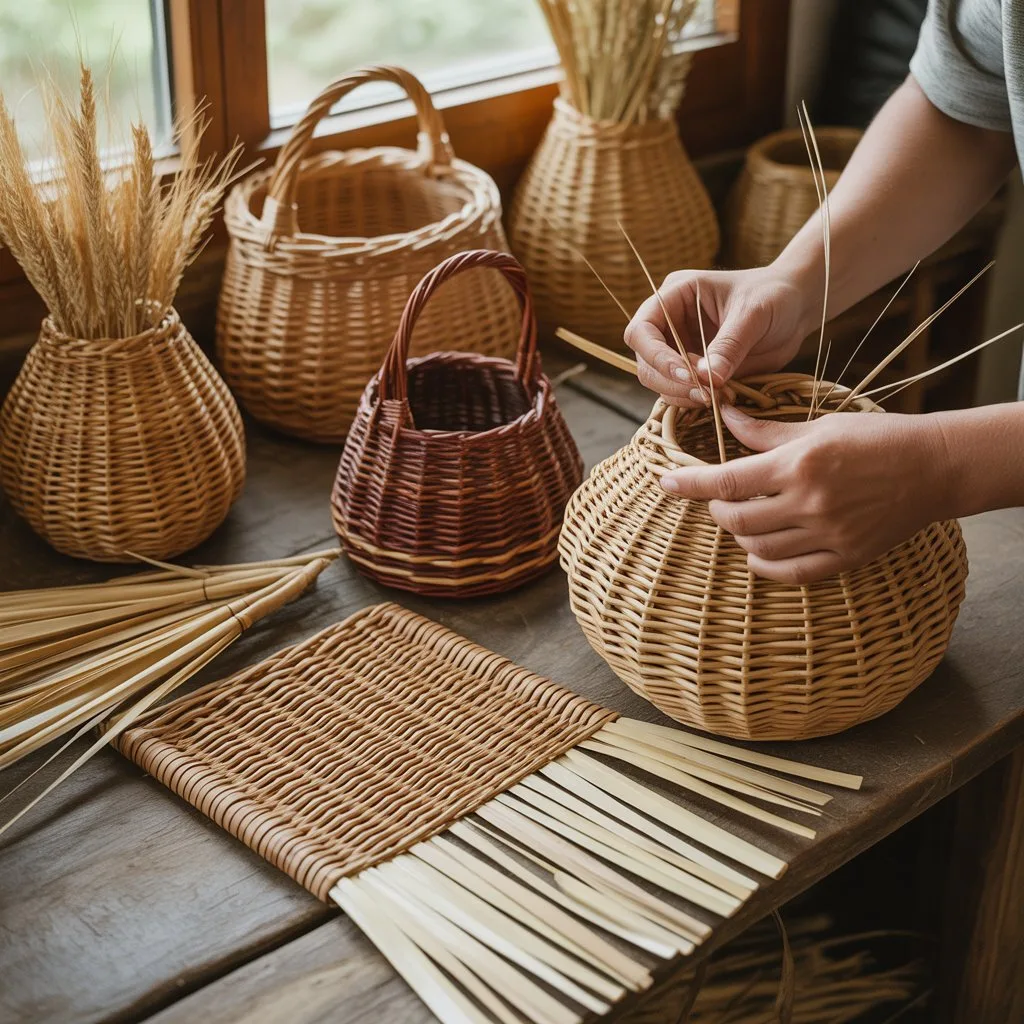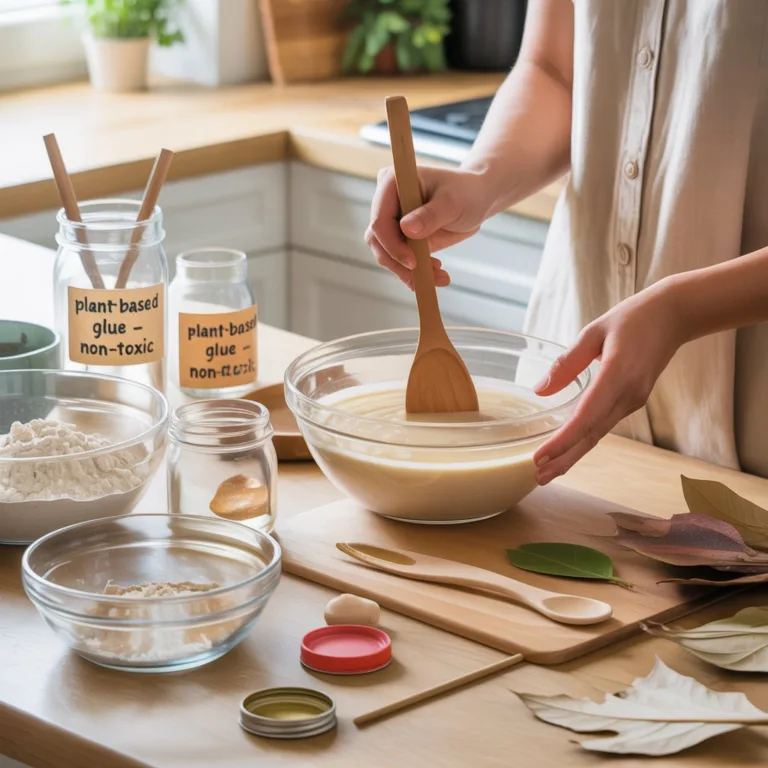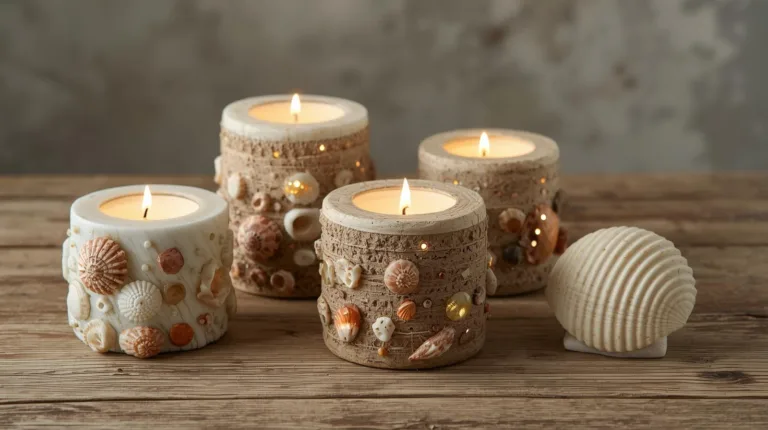Natural weaving is more than just a craft — it’s a connection between creativity, sustainability, and tradition. Making mats and baskets by hand using natural materials allows you to produce beautiful, functional, and environmentally friendly items while honoring an art form that has existed for thousands of years. Whether you’re seeking a relaxing hobby, a meaningful educational activity, or a way to reduce your environmental footprint, natural weaving offers endless possibilities.

The Beauty of Natural Weaving
Weaving has been practiced across cultures for centuries, often as both a practical skill and an artistic expression. By interlacing plant fibers, leaves, or grasses, people have created baskets, mats, containers, and even shelters. What makes natural weaving special today is its harmony with sustainability — using renewable, biodegradable materials instead of synthetic or plastic-based ones.
This form of craft celebrates patience, mindfulness, and creativity. Each mat or basket tells a story — not just of its maker but of the land and the plants that provided the materials.
Choosing Eco-Friendly Materials
The foundation of natural weaving lies in the materials. The beauty of this craft is that you can source most of what you need from your local environment or recycled resources.
Common natural materials for weaving include:
- Palm leaves: Flexible and easy to handle, perfect for larger mats or sturdy baskets.
- Banana fiber: Smooth and pliable, great for delicate or decorative items.
- Bamboo strips: Durable and lightweight, often used for structured or framed baskets.
- Grasses and reeds: Widely available and traditionally used in floor mats or table mats.
- Jute and sisal: Strong natural fibers that add rustic charm to any handmade piece.
Before you begin, ensure your materials are dry and clean. Remove any thorns or sharp edges and trim uneven parts. To make weaving easier, soak the fibers in warm water for about 30 minutes. This softens them, preventing cracks or breaks while weaving.
Tools You Might Need
One of the great aspects of natural weaving is that it requires very few tools. You can start with just your hands and a few basic items:
- A pair of scissors for trimming fibers
- A bucket or basin for soaking materials
- Clothespins or clips to hold parts together while working
- A flat surface or mat to work on
If you want to make precise designs or multiple identical pieces, you can create simple wooden or cardboard frames to guide your weaving.
Basic Weaving Techniques
Once your materials are ready, it’s time to start weaving. Although there are countless patterns and methods, understanding the basics will give you a strong foundation.
1. The Over-and-Under Technique
This is the simplest and most common weaving method. Lay out a few strands horizontally (the warp) and then weave another strand vertically (the weft), alternating over and under. Continue this pattern, tightening the rows as you go.
2. Twining
Twining uses two weft strands that twist around each warp strand. It’s great for creating textured designs and adds strength to baskets or mats.
3. Coiling
Coiling is ideal for baskets. You wrap a long strand around a bundle of fibers, stitching it together as you spiral outward. This method allows you to build up walls and shape the basket as you go.
4. Plaiting
Plaiting, similar to braiding, involves interlacing three or more strands together. It’s often used to make decorative borders or handles for baskets.
Experiment with combinations of these techniques to create unique textures and patterns.
Crafting a Simple Handwoven Mat
To begin with something manageable, try making a handwoven mat using palm leaves or grass.
- Prepare the base: Lay several strips side by side on a flat surface. These will form your warp.
- Weave the weft: Take another strip and weave it over and under each base strip, alternating directions with each row.
- Tighten and align: Pull each new row close to the previous one to keep the weave tight.
- Finish the edges: Fold the ends of the strips over and secure them by tucking or sewing them in place.
You can create colorful designs by using dyed fibers or alternating materials with different textures.
Making a Natural Basket
Basket weaving offers more creative freedom and functionality. A simple basket can be made with grasses, reeds, or thin bamboo strips.
- Create the base: Cross several strips in the center to form a star shape.
- Start the sides: Begin weaving a long strip around the base, over and under each spoke, gradually pulling it upward to form the sides.
- Shape and tighten: Adjust tension as you go to control the shape. Wider spacing will make an open weave, while tighter spacing will create a sturdy basket.
- Finish neatly: Trim any excess fiber and tuck or sew the ends.
Adding natural handles made from twisted plant fibers or braided strips can give your basket a professional touch.
Dyeing and Decorating Naturally
To make your mats and baskets even more visually appealing, you can dye the fibers using natural ingredients.
Popular natural dyes include:
- Turmeric: Produces a bright yellow color.
- Beetroot: Creates shades of red or pink.
- Spinach leaves: Yields green tones.
- Coffee or tea: Adds warm brown hues.
Boil the natural ingredients in water, soak your fibers for 15–30 minutes, then rinse and dry them. You can also add patterns or textures by combining dyed and undyed materials during weaving.
Benefits of Natural Weaving
1. Eco-Friendly and Sustainable: You’re using renewable materials and reducing waste, helping the planet.
2. Affordable Craft: Most materials are free or inexpensive, making it accessible to everyone.
3. Therapeutic Activity: The slow rhythm of weaving is calming and encourages focus.
4. Educational Value: Great for children and classrooms, teaching patience, creativity, and environmental awareness.
5. Practical and Decorative: Your finished pieces can serve as gifts, décor, or useful household items.
Weaving in Modern Sustainability
Natural weaving fits perfectly into today’s sustainability movement. As the world seeks alternatives to mass-produced goods, handmade crafts offer authenticity, durability, and a personal touch. You can even turn weaving into a small business by selling your eco-friendly products online or at local craft fairs.
By embracing traditional techniques, you’re not only preserving cultural heritage but also promoting conscious living. Each woven mat or basket serves as a small reminder that creativity and care for the environment can go hand in hand.
Continuing the Journey
Once you’ve mastered basic weaving, explore advanced designs — circular mats, multi-colored patterns, or baskets with lids. Join workshops, learn from local artisans, or share your creations on sustainable living communities online.
Weaving naturally is more than an activity; it’s a mindful practice that transforms simple fibers into lasting, meaningful art. Keep experimenting, keep learning, and keep creating — each piece you make weaves your personal story into a sustainable future.

Lucas Hartman is a DIY enthusiast and sustainability advocate focused on natural crafts and eco-friendly home décor. With a background in arts and design, Lucas creates tutorials that help families and hobbyists transform everyday recycled or organic materials into beautiful, functional projects.



